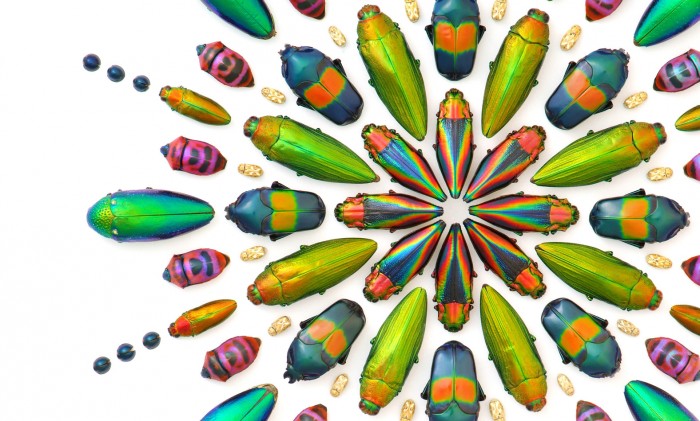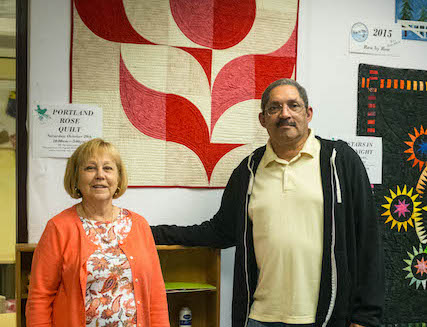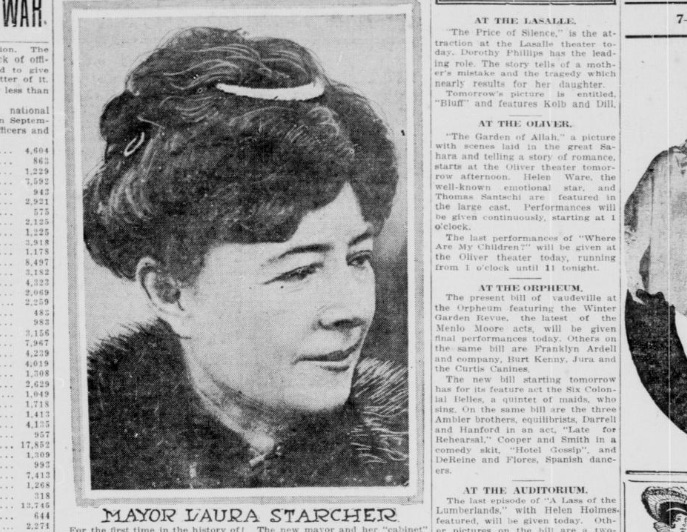As a child, Christopher Marley was terrified of bugs and Salem seemed to have its share of them. It didn’t matter if he saw a spider on a bush outside or a daddy long-legs in the shower, bugs evoked in him a sheer terror down to the marrow.
“It’s a horror feeling,” Marley says. “I didn’t want to be near anything that was crawling.”
After working all over the world for more than a decade as a designer for high-end fashion labels such as Donna Karan and Armani, Marley, 41, had seen it all: giant cockroaches, alien-looking beetles and one massive tarantula on a stairwell in Taipei.
Then, one day, he was wandering in a craft market in Thailand and happened upon some local merchants selling bugs preserved in glass frames. There was nothing beautiful about these poorly mounted insect displays, but Marley bought them anyway. Years later, while working in Capetown, South Africa, he decided to engage his fears directly and took those frames apart. He started playing around with the dead bugs, now harmless to him, and transformed them into something beautiful: a sparkling mosaic of exoskeletons and legs.
“I wanted to look at these species from a design perspective,” Marley says. “I wanted to get away from the bugginess of them.”
In the decade since, Christopher Marley has become something his childhood fears could never contemplate—an artist who works with insects and other natural specimens to create framed arrangements of preserved bugs. Around this fascination with insects, Marley has built an empire of his own, with works that adorn stylish homes across the world. Retailers such as Williams-Sonoma Home, Gump’s of San Francisco and Barney’s carry Marley’s bright insect prints.
These days, he is doing it all from his hometown of Salem, where he recently returned from Los Angeles with his wife and four children, and his wholesale business.
The Marleys moved to be closer to the couple’s family, but the relocation also sparked an otherwise staid downtown arts scene in the state’s capital. Though he had no plans to open a gallery there—many said such a venture wouldn’t fly in Salem—he has since transformed a long-empty building into a striking gallery, Pheromone, named for the scent animals use to communicate with each other.
In his downtown Liberty Street gallery, Marley appears to be at home among his insects. He has a broad-sweeping smile, a chiseled body and a dimpled chin. Dressed in jeans and a black T-shirt, his hair is perfectly placed.
His bugged-out art is just as meticulous.
The walls in the gallery are lined with sparkling beetle mosaics, paper-thin butterfly arrangements, carnivorous plant preparations and his newest obsession, craggy mineral deposits preserved under glass. Prices for his framed arrangements range from $200 to $4,000.
Removed from their natural settings, mounted with the precision of a surgeon and vacuum-sealed in a process that preserves their bodies for more than fifty years, the bugs on display have not lost many of the properties that make them the stuff of nightmares. Their presentation, however, makes them accessible curiosities.
Marley has come to see them as vestiges of authenticity in the world.
“Our society is being inundated with mass products, and our experiences are becoming more virtual. Very little that we do is physically real.” Marley says, pointing to a beetle mosaic. “These are very centering and refreshing on a physical level.”
Apart from some carnivorous plants and some copper that he buys from Michigan, very few items on display at Pheromone are domestic species. What drives Marley is showing people bugs they have never encountered—or likely ever will.
He works with indigenous populations in bug-rich areas of South America and Southeast Asia. Locals know where the most prized bugs are found, how to capture them and how to prepare them for shipping to Marley’s studio in Salem.
The specimens arrive packaged and must be re-hydrated so that he can position them on his mounting boards. Marley selects only the most pristine specimens and organizes them, according to their color, size, shape and features.
Works like his beetle mosaics, which bring together beetle specimens from nearly every continent in a stunning pattern of shape and color, exemplify everything Marley does well. The mosaics often include eight to ten different species of bugs that may be sourced from as many countries. Together, they are a stirring display of both uniformity and variety of the natural world.
The process of his work casts Marley more as designer or storyteller than artist, he says. “I didn’t create any of these things, I’m just the arranger.”
His works, now the darlings of high-end retailers and discerning collectors on both coasts, are an implicit dialogue of exotic insects as art and reality. Out of chaos, he has found order; out of fear, inspiration.










To be honest, I just think Marley is just a coward. He plays with dead bugs but runs away if they r alive!!!
Cant u tell where he gets his stupid bugs from?!